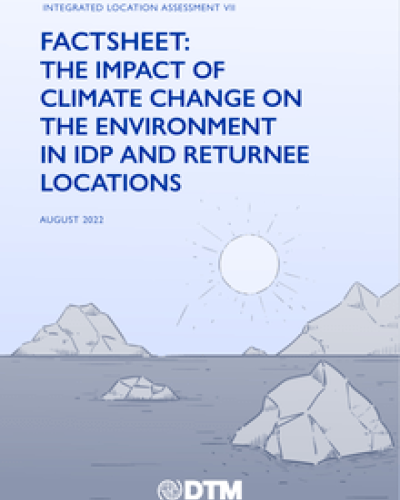Factsheet: The Impact of Climate Change on the Environment in IDP and Returnee Locations - Integrated Location Assessment VII

INTRODUCTION
Climate change and environmental degradation are widespread in Iraq, with reduced water availability and land degradation impacting the livelihoods of vulnerable communities across the country. The United Nations Global Environment Outlook 6 (GEO-6) identified Iraq as the world’s fifth most vulnerable country to decreasing water and food availability and extreme temperatures. 1 Displaced families are likely to be among the most vulnerable to climatic and environmental changes that can impact livelihoods, food security and social cohesion. Sustainable return and rein-tegration can be determined by many factors but the role of climatic change and environmental degradation in return dynamics is insufficiently understood. The impact of climate change on the displaced and returnee populations in Iraq remains an important gap in existing research and monitoring, yet addressing this gap is vital as environmental trends worsen and humanitarian response planning ceases at the end of 2022.
The Integrated Location Assessment 7 (ILA 7), conducted from April to June 2022, included a select group of indicators focused on:
a) the impact of climate change on the environment in all locations of displacement and return;
b) the impact of environmental degradation on locations where agriculture, livestock rearing and fishing were reported among the top three sources of income for the majority of IDPs or returnees in a location. The potential impact of environmental degradation for these livelihoods may include loss of crop production, livestock deaths or reduced fishing yields, as well as the proportion of families that had abandoned agricultural livelihoods in the last 12 months.
This factsheet provides a summary of the data on these indica-tors with the aim of highlighting trends and geographic areas of concern to guide more comprehensive and granular assessments of the vulnerability factors and mobility drivers among displaced and returned families living in locations affected by climate change and environmental degradation.




